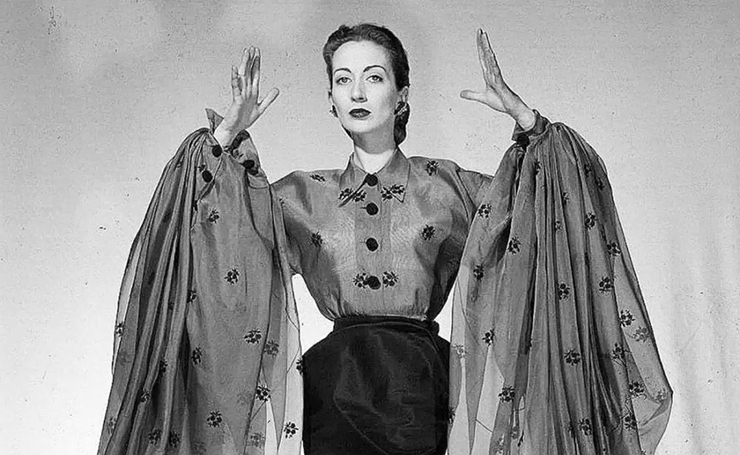
Elsa Schiaparelli (10 September 1890 – 13 November 1973) was the legendary Italian fashion designer, whose innovative and daring designs have left an indelible mark on the world of fashion, transforming it into an art form that combines elements of surrealism and practicality.
Born into an aristocratic family in Rome, Schiaparelli’s early years were marked by exposure to the worlds of art and literature. Her father, Celestino Schiaparelli, was an acclaimed scholar and an expert in Oriental studies, while her mother, Maria-Luisa, hailed from a wealthy family with artistic inclinations. And Elsa’s uncle, Giovanni Schiaparelli was the renowned astronomer who discovered the canals of Mars. Such an intellectual and artistic environment in which she was raised significantly influenced her later work and her innovative approach to fashion.
1910-1920: Schiaparelli’s early years were marked by her involvement in the bohemian art scene of Paris. During this time, she was greatly influenced by the artistic avant-garde movement, which would later find expression in her fashion designs. In 1927, she opened her first boutique in Paris, marking the beginning of her illustrious career in the fashion industry.
1930-1940: The 1930s saw Schiaparelli’s rise to international prominence. Her designs challenged conventional norms, introducing innovative elements such as the use of zippers, synthetic fabrics, and bold prints. Notably, her collaboration with artists like Salvador Dali led to the creation of iconic pieces that blurred the lines between fashion and art. One of their most famous collaborations was the “Shoe Hat,” which featured a high-heeled shoe as a headpiece, and the “Lobster Dress,” where a lobster was painted onto a white silk evening gown. Her signature “Shocking Pink” color, a vibrant and daring hue, became synonymous with her brand.
1940-1950: The outbreak of World War II disrupted the fashion industry, leading to a shift in Schiaparelli’s design focus. She temporarily closed her Paris atelier and moved to the United States, where she contributed to the war effort by designing uniforms for the Women’s Army Corps. Despite the challenges posed by the war, Schiaparelli continued to innovate, emphasizing practical and functional designs without compromising on style.
1950-1973: Schiaparelli’s return to Paris in the 1950s marked a renewed period of creativity and experimentation. Schiaparelli was one of the first designers to use zippers in women’s clothing. She incorporated visible zippers as a decorative element, challenging the traditional notions of how zippers were used in fashion.
While her fashion house closed in 1954, Schiaparelli’s influence on the fashion industry and her innovative designs continue to inspire contemporary designers. In 2012, the Schiaparelli brand was revived with a new creative director. The brand has experienced a resurgence in recent years, with a focus on haute couture and ready-to-wear collections.
The post Elsa Schiaparelli appeared first on The Fashiongton Post.
